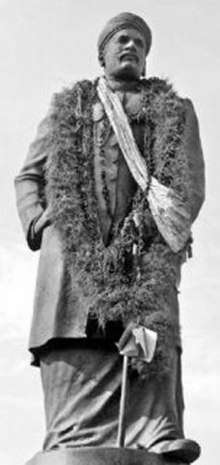Kallumala Samaram
Kallumala Samaram (Stone Necklace Protest) is an agitation or social revolution by Pulayar community that took place at Perinad and nearby villages such as Cherumoodu, Kanjavely etc. in, Kollam district on 24 October 1915.
The agitation is also known as Perinad Lahala or Perinad Mutiny. It enjoys a significant position in Kerala history.
History
The agitation was a sudden uprising against the upper class's dictum to the minority castes to not use the public road, denying the right to education, prohibiting entry to temples and denying women to wear gold or metal ornaments.[1]
The agitation intensified by December-end and a meeting was convened under the chair of Ayyankali on 21 December 1915 at Plavilapurayidom, Cherumoodu, near Perinad where women belonging to Pulaya community threw away the Kallumala (ornaments made out of stone and woods) and proclaimed that they will only use gold or metal ornaments. Kallumala's were chains of beads worn by their ladies as a symbol of slavery and inferior caste status.[2]
Through this agitation the oppressed class fought the caste elites by breaking their chains to win the right to wear ornaments.
During pre-independence era women from lower castes in Kerala faced severe unfathomable oppression. There were strict diktats regarding dress codes and ornaments and there was even taxes to be paid to erstwhile Travancore kings for covering their breasts.[3]
References
- "Communist Party of India revives Perinad Lahala memories to fight extremism". The Times of India. 4 October 2016. Retrieved 25 August 2019.
- "kallumala samaram". socialscienceijksubdist.blogspot.in. Retrieved 5 October 2016.
- Surendranath, Nidhi (21 October 2013). "200 years on, Nangeli's sacrifice only a fading memory". The Hindu. ISSN 0971-751X. Retrieved 5 October 2016.
